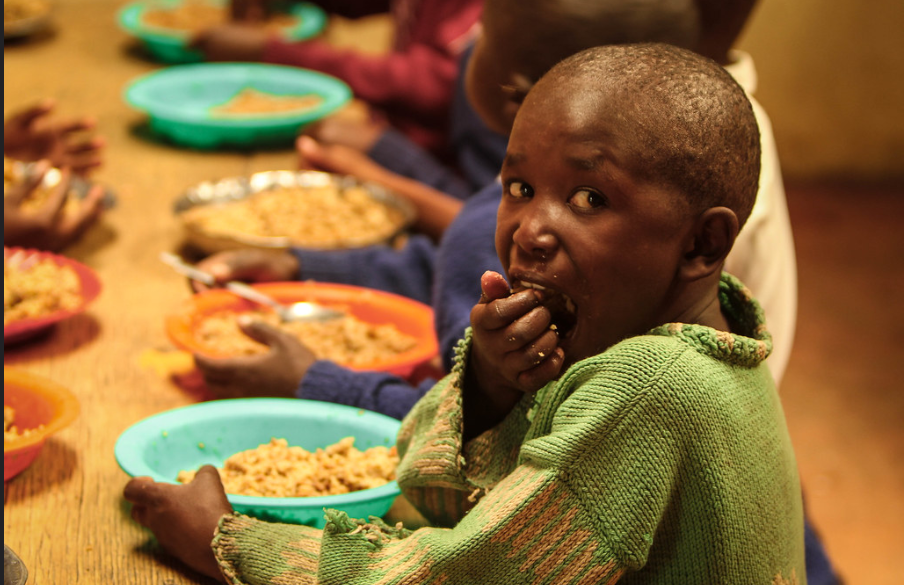UN Sounds Alarm on Hunger Catastrophe in Five Global Hotspots Amid Crises
In Myanmar, the compounded effects of a major earthquake, intensifying conflict, widespread displacement, and high food prices pose a worsening threat.

A new joint report by the United Nations’ Food and Agriculture Organization (FAO) and the World Food Programme (WFP) has issued an urgent warning: five regions of the world—Sudan, Palestine, South Sudan, Haiti, and Mali—are now facing catastrophic levels of food insecurity, with some communities already experiencing famine or on the brink of starvation and death. Without immediate and coordinated global action, millions of lives could be lost in the coming months.
The Hunger Hotspots report, developed with support from the European Union’s Global Network Against Food Crises (GNAFC), is a biannual early-warning and predictive analysis assessing food crises expected within a five-month horizon. The June 2025 edition paints a dire picture of escalating humanitarian needs due to persistent conflict, economic instability, and climate-related shocks.
Catastrophic Food Insecurity in Highest-Concern Countries
1. Sudan: Conflict-Induced Famine Persists
Sudan remains the epicenter of the hunger crisis, with famine conditions confirmed in 2024. Ongoing violence—particularly in Greater Kordofan and Greater Darfur—continues to displace populations and obstruct humanitarian access. Inflation is soaring, and food availability is plunging. The report warns that 24.6 million people could face Crisis level or worse (IPC Phase 3+) acute food insecurity, including 637,000 in Catastrophe (IPC Phase 5) through May 2025.
2. Palestine: Entire Gaza Population Faces Crisis or Worse
In Gaza, large-scale military operations have devastated infrastructure and obstructed aid delivery. The entire population—2.1 million people—is projected to face IPC Phase 3+ food insecurity, with 470,000 projected to be in Catastrophe (IPC Phase 5) through September 2025. This is compounded by exorbitant food prices, destroyed livelihoods, and a deepening blockade-induced economic collapse.
3. South Sudan: Bleak Outlook Amid Compounding Threats
South Sudan is dealing with escalating political instability, risk of floods, and macroeconomic turmoil. The report estimates that 7.7 million people—57% of the population—will suffer high levels of food insecurity between April and July 2025. Alarmingly, 63,000 individuals are at risk of Catastrophe, and the latest IPC update indicates famine risk in two areas of the country.
4. Haiti: Spiraling Insecurity and Displacement
Record-breaking levels of gang violence and insecurity have displaced thousands in Haiti, particularly in Port-au-Prince. Over 8,400 internally displaced persons are expected to face Catastrophe levels of food insecurity by June 2025. Aid delivery remains severely hindered due to access constraints and rampant lawlessness.
5. Mali: Food Systems Eroded by Conflict and Inflation
In Mali, the interplay of ongoing conflict and soaring grain prices is dismantling the coping capacity of vulnerable households. Between June and August 2025, 2,600 individuals could face Catastrophe conditions (CH Phase 5) without timely assistance. The humanitarian outlook is expected to deteriorate further if interventions are delayed.
Additional Hotspots and Emerging Trends
The report also flags other countries of very high concern, including:
-
Yemen
-
Democratic Republic of the Congo
-
Myanmar
-
Nigeria
In Myanmar, the compounded effects of a major earthquake, intensifying conflict, widespread displacement, and high food prices pose a worsening threat. In the DR Congo, escalating violence and displacement have reintroduced the country to the hotspot list.
Burkina Faso, Chad, Somalia, and Syria are also named as hunger hotspots with high levels of acute food insecurity driven by persistent conflict and economic fragility.
Areas of Improvement—But Gains Are Fragile
There is some positive news. Countries such as Ethiopia, Kenya, Lebanon, Lesotho, Malawi, Mozambique, Namibia, Niger, Zambia, and Zimbabwe have been removed from the list due to improved harvests, reduced conflict, or weather stability. In Lebanon, the decline in military operations has eased pressures on food systems.
However, FAO and WFP emphasize that these improvements are fragile. The risk of reversal remains high if new or recurring shocks materialize.
Call for Immediate Global Action
The report delivers a stark message: the hunger crisis is not a future threat—it is happening now. FAO Director-General QU Dongyu warned, “We must act now, and act together, to save lives and safeguard livelihoods. Protecting people’s farms and animals…is not just urgent—it is essential.”
WFP Executive Director Cindy McCain echoed the urgency: “This report is a red alert…without funding and access, we cannot save lives.”
Funding Shortfalls and Access Restrictions Are Escalating the Crisis
In nearly all hotspots, insecurity, bureaucratic obstacles, and logistical challenges are crippling aid operations. Meanwhile, funding gaps have forced drastic reductions in food assistance, threatening the reach and effectiveness of life-saving interventions.
The report highlights the cost-effectiveness of early humanitarian action, noting that pre-emptive responses not only save lives but also cost significantly less than delayed interventions.
A Shrinking Window to Save Lives
The Hunger Hotspots report offers a vital blueprint for urgent and coordinated action. The UN calls on the international community—donors, governments, NGOs, and the private sector—to mobilize resources, open humanitarian corridors, and scale up resilience-building efforts immediately.
As the clock ticks, millions remain trapped in the crosshairs of hunger, conflict, and crisis. The global response must rise to the scale of this unfolding emergency—or risk irreversible loss of life.










